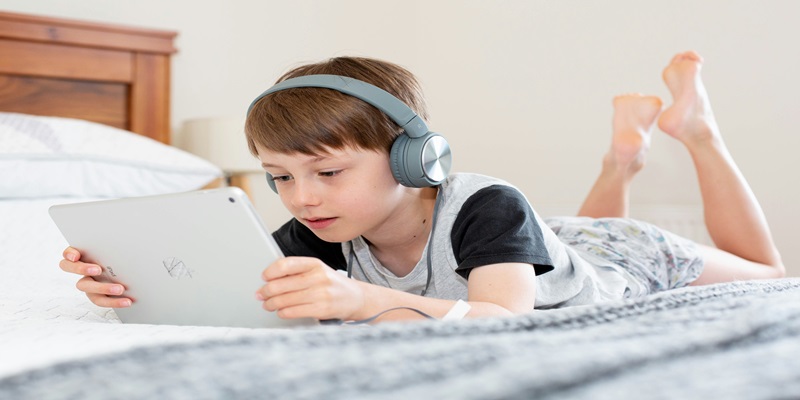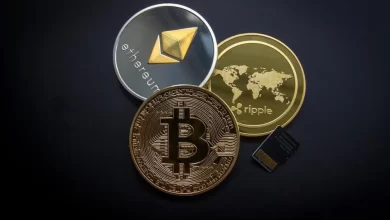10 Must-Have Technological Tools for Early Childhood Education and Development

Since 2024, integrating technology into early childhood education is essential. These tools can enhance learning, foster creativity, and support developmental milestones. For young children, the right technological tools can make education both fun and effective. Here are ten must-have technological tools for early childhood education and development.
Interactive Learning Apps:
Interactive learning apps are a fantastic way to engage young children in educational activities. Apps like ABCmouse, Endless Alphabet, and Starfall cover a range of subjects, including reading, math, and science. These apps use games, songs, and interactive stories to make learning enjoyable. They also provide instant feedback, helping children understand their progress and areas for improvement. Additionally, the colorful graphics and fun animations keep children entertained and motivated.
Digital Storybooks:
Digital storybooks combine the charm of traditional books with the interactivity of technology. Platforms like Epic!, Tales2Go, and FarFaria offer vast libraries of e-books and audiobooks. These digital storybooks often include interactive elements, such as clickable words and animated illustrations. This interaction helps children improve their reading skills and comprehension. Moreover, the ability to listen to stories enhances vocabulary and listening skills.
Educational Tablets:
Educational tablets are designed specifically for young learners. Devices like the Amazon Fire Kids Edition and LeapFrog LeapPad come pre-loaded with educational apps and games. These tablets feature kid-friendly interfaces and parental controls. They cover various subjects and skills, from literacy and numeracy to creativity and problem-solving. Educational tablets also provide a safe and controlled environment for children to explore technology.
Interactive Whiteboards:
Interactive whiteboards are excellent tools for creating engaging learning environments. Brands like SMART Board and Promethean offer boards that connect to computers or tablets. These whiteboards display multimedia content, allow annotations, and save work for future reference. They are particularly effective for visual and kinesthetic learners. Interactive whiteboards also facilitate collaborative learning, allowing multiple children to participate in activities simultaneously.
Coding Toys:
Introducing coding at an early age can build a strong foundation for future learning. Coding toys like Cubetto, Osmo Coding, and Code-a-Pillar teach basic programming concepts through play. These toys use physical blocks, puzzle pieces, or interactive screens to guide children through coding activities. Learning to code enhances problem-solving and logical thinking skills. Moreover, coding toys foster creativity by encouraging children to design and experiment with their own programs.
Augmented Reality (AR) Learning Tools:
Augmented Reality (AR) learning tools blend digital content with the real world, providing immersive educational experiences. Apps like QuiverVision, AR Flashcards, and Merge Cube bring subjects to life. For instance, children can explore animals in 3D, interact with alphabet characters, or delve into space exploration. AR tools stimulate curiosity and imagination, making learning more engaging and memorable. They also help children understand abstract concepts by visualizing them in a tangible way.
Music Creation Apps:
Music creation apps allow children to explore their musical talents and creativity. Apps like GarageBand, Toca Band, and Loopimal offer virtual instruments and recording tools. Children can compose their own songs, experiment with different sounds, and learn about music theory. Creating music not only enhances creativity but also improves cognitive skills, such as memory and concentration. Moreover, sharing their music with others can boost confidence and communication skills.
Educational Robots:
Educational robots are fantastic tools for teaching STEM (Science, Technology, Engineering, and Mathematics) concepts. Robots like Bee-Bot, Botley, and Dash & Dot can be programmed to perform various tasks. These robots often come with companion apps that provide coding challenges and activities. Working with robots helps children understand cause-and-effect relationships and develop a hands-on approach to learning. Additionally, educational robots encourage teamwork and collaboration, as children often work together to solve problems.
Virtual Field Trip Apps:
Virtual field trip apps offer immersive experiences that transport children to different places and times. Apps like Google Expeditions, Discovery Education, and National Geographic Kids provide virtual tours of museums, historical sites, and natural wonders. These experiences make learning more engaging and memorable by allowing children to explore the world from their classroom or home. Virtual field trips also enhance understanding and retention by making abstract concepts tangible.
Interactive Phonics Tools:
Phonics is a crucial aspect of early literacy development. Interactive phonics tools like Starfall Phonics, Hooked on Phonics, and ABC Reading Eggs use games, songs, and stories to teach letter sounds and word recognition. These tools provide a multisensory approach to learning phonics, helping children develop strong reading skills. They also offer personalized learning paths, catering to each child’s individual pace and needs. Furthermore, interactive phonics tools make learning to read fun and enjoyable, fostering a love for reading from an early age.
Conclusion:
Integrating technological tools into early childhood education can significantly enhance learning and development. From interactive learning apps and digital storybooks to coding toys and virtual field trip apps, these tools provide a comprehensive and engaging educational experience. By embracing these technologies, you can help your child develop essential skills, stay engaged in their studies, and foster a love for learning. Remember, the key is to find the right balance and choose tools that best suit your child’s individual learning style and needs. Investing in these technological tools is an investment in your child’s future, equipping them with the skills and knowledge they need to succeed in an ever-evolving world.





